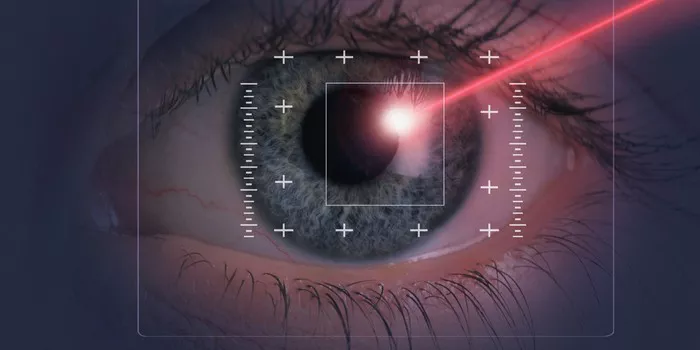Robotic technology in ophthalmic surgery has revolutionized how surgeons perform delicate procedures. Eye surgery robots enhance precision, reduce hand tremors, and improve patient outcomes. This article explores 5 prominent types of eye surgery robots, their applications, benefits, and future prospects.
1. The da Vinci Surgical System
Overview
The da Vinci Surgical System, developed by Intuitive Surgical, is one of the most renowned robotic systems in various surgical fields, including ophthalmology. Though initially designed for general surgery, it has been adapted for eye surgeries due to its precision and control.
Components and Functionality
The system comprises three main components:
A surgeon’s console
A patient-side cart with four interactive robotic arms
A high-definition 3D vision system
Surgeons control the robotic arms from the console, which translate their hand movements into smaller, precise actions by the instruments attached to the arms.
Applications in Ophthalmology
The da Vinci system is primarily used in complex eye surgeries where precision is crucial, such as:
Vitrectomy
Retinal surgery
Corneal transplant
Advantages
Enhanced Precision: The system translates large hand movements into smaller, more precise actions.
Stability: Minimizes hand tremors, leading to more stable surgical maneuvers.
3D Visualization: Provides a high-definition, magnified view of the surgical area.
Limitations
Cost: High initial investment and maintenance costs.
Learning Curve: Requires significant training and practice.
2. PRECEYES Surgical System
Overview
The PRECEYES Surgical System, developed by Preceyes B.V., is specifically designed for retinal surgery. It aims to enhance precision and control during intricate retinal procedures.
Components and Functionality
This system features a robotic arm controlled by a surgeon via a joystick. It allows for precise manipulation of surgical instruments within the eye.
Applications in Ophthalmology
Retinal Vein Cannulation: For treating retinal vein occlusion.
Subretinal Drug Delivery: Administering medication directly under the retina.
Macular Surgery: Procedures involving the macula, such as peeling epiretinal membranes.
Advantages
Microscale Precision: Enables extremely delicate movements within the eye.
Reduced Trauma: Minimizes unintentional damage to surrounding tissues.
Steady Hand: The robotic system eliminates hand tremors, providing stable instrument control.
Limitations
Specialized Use: Primarily designed for retinal surgeries, limiting its versatility.
Accessibility: Not widely available due to its specialized nature and cost.
See Also: 5 Types of Eye Bag Removal Surgery
3. R2D2 Robotic System
Overview
The R2D2 Robotic System is a collaborative development between researchers at the University of Bern and ophthalmologists. It focuses on performing precise and minimally invasive eye surgeries.
Components and Functionality
R2D2 includes:
A robotic arm with high precision
A surgeon-controlled interface
Advanced imaging systems
Applications in Ophthalmology
Retinal Microsurgery: For procedures like membrane peeling and retinal detachment repairs.
Cataract Surgery: Assisting in lens extraction and intraocular lens implantation.
Corneal Surgery: Enhancing precision in corneal transplants and other corneal procedures.
Advantages
Versatility: Applicable to various types of eye surgeries.
High Precision: Ensures accurate surgical maneuvers.
Advanced Imaging: Provides detailed visualization of the surgical field.
Limitations
Training Requirements: Surgeons need extensive training to master the system.
Equipment Cost: High initial and operational costs.
4. ARTIS Pheno
Overview
The ARTIS Pheno, developed by Siemens Healthineers, is a versatile robotic system used in various surgical fields, including ophthalmology. It offers high precision and advanced imaging capabilities.
Components and Functionality
ARTIS Pheno integrates:
A flexible robotic arm
3D imaging systems
A surgeon control interface
Applications in Ophthalmology
Vitreoretinal Surgery: For procedures involving the vitreous and retina.
Orbital Surgery: Assisting in surgeries around the eye orbit.
Laser Eye Surgery: Enhancing precision in laser-assisted procedures.
Advantages
Precision and Control: Provides fine control over surgical instruments.
Advanced Imaging: High-definition 3D imaging for better visualization.
Flexibility: Can be used for a wide range of ophthalmic procedures.
Limitations
Cost: Significant investment required.
Complexity: Requires training and experience to operate effectively.
5. ZEISS Robotic Visualization System (RVS)
Overview
The ZEISS Robotic Visualization System (RVS) is designed to enhance the visualization and precision of ophthalmic surgeries. It is developed by ZEISS, a leader in optical and optoelectronic technology.
Components and Functionality
The ZEISS RVS includes:
A robotic arm
High-definition optical systems
Surgeon control interface
Applications in Ophthalmology
Microsurgery: For delicate procedures like retinal surgery and corneal transplants.
Laser-Assisted Surgery: Enhances precision in laser treatments.
Anterior Segment Surgery: Including cataract surgery and glaucoma procedures.
Advantages
Enhanced Visualization: Provides high-definition images for better surgical outcomes.
Precision: Robotic control reduces human error.
Versatility: Applicable to various types of eye surgeries.
Limitations
Cost: High initial and operational costs.
Learning Curve: Requires significant training to operate efficiently.
Conclusion
Robotic technology in ophthalmic surgery continues to advance, offering improved precision, control, and patient outcomes. The da Vinci Surgical System, PRECEYES Surgical System, R2D2 Robotic System, ARTIS Pheno, and ZEISS Robotic Visualization System represent some of the leading innovations in this field. While these systems come with high costs and require extensive training, their benefits in enhancing surgical precision and reducing trauma are invaluable. As technology evolves, the integration of robotic systems in ophthalmology will likely become more widespread, further transforming the landscape of eye surgery.
Related topics:

